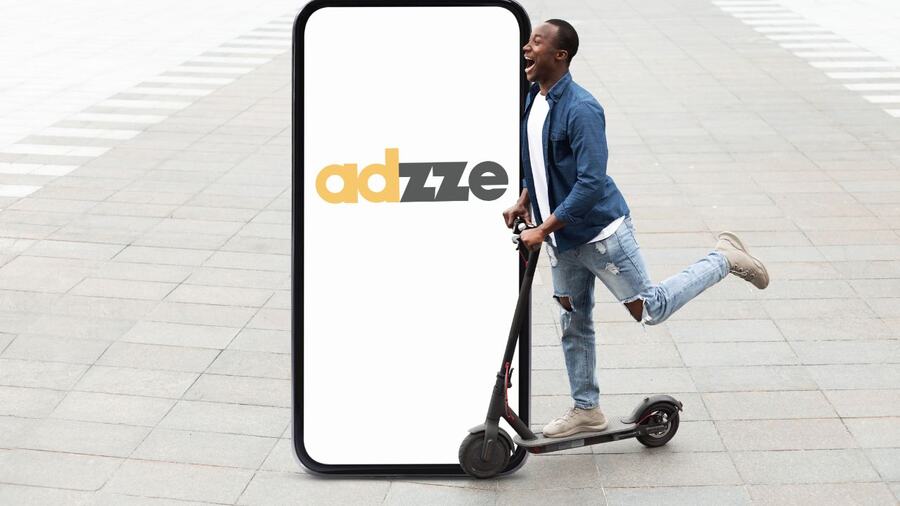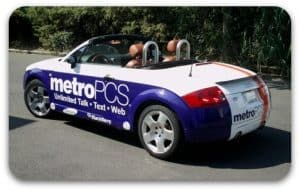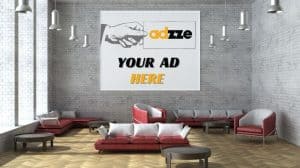When brands brainstorm ways to capture attention in bustling cities, urban billboards often top the list. Big, bold, and supposedly unavoidable, billboards ads have long been a fixture of urban advertising. But at what cost?
While their visibility is undeniable, urban billboards are increasingly criticized for the way they disrupt city aesthetics, contribute to visual pollution, and overwhelm already saturated public spaces. Today, forward-thinking marketers are reexamining whether these towering displays still deliver the value they promise—or whether in-hand advertising offers a smarter, more visually considerate alternative.
Let’s explore the true aesthetic impact of urban billboards and how more sustainable, community-centric strategies like in-hand media are reshaping urban ads for the better.
Urban Billboards: How They Alter the Visual Fabric of Cities
From Times Square in New York to the Wilshire Corridor in Los Angeles, urban billboards have transformed city skylines into commercial tapestries. What was once a tool for wayfinding and public service has become a race for dominance in cluttered visual environments.
But here’s the problem: urban advertising rarely stops at one billboard. High-traffic areas are often saturated with overlapping visuals—LED boards, rotating vinyls, 3D installations, and digital animations. These urban ads fight not just for attention, but for breathing room in a city’s architectural and cultural landscape.
The aesthetic toll includes:
Obstruction of architecture: Historic and modern buildings become backdrops rather than landmarks.
Visual clutter: Competing messages overwhelm rather than engage.
Genericization: Cities lose uniqueness as streets start to look like ad catalogs.
Urban Billboards and Public Backlash
Many cities across the globe have pushed back against urban billboards for these very reasons. In São Paulo, Brazil, for example, the “Clean City Law” banned all outdoor advertising in 2007, removing over 15,000 billboards and reclaiming the urban skyline for the public.
In Los Angeles, strict zoning regulations have led to growing conflicts between advertisers and city planners. Neighborhood councils frequently object to new urban billboard proposals, citing degradation of community aesthetics and safety concerns due to driver distraction.
As urban residents become more vocal about the sanctity of their public spaces, the pressure is mounting for marketers to find alternatives that respect city identity while still delivering brand impact.
Urban Ads Should Be Seen—Not Resented
The purpose of advertising is visibility. But visibility that intrudes is different from visibility that invites.
Here’s where in-hand advertising comes in as a solution to the aesthetic problem of urban billboards.
What is in-hand advertising?
It refers to ad placements directly delivered into consumers’ hands through objects they already use—like:
Pharmacy bags
Coffee sleeves
Hotel key cards
Pizza box toppers
Delivery packaging
These urban ads don’t loom over pedestrians—they accompany them in everyday life.
Why In-Hand Advertising Works in Urban Spaces
✅ No Visual Pollution
Unlike urban billboards, in-hand media leaves no trace on a city’s infrastructure. The visual environment remains intact—no towering signs, no clashing neon, no disruption of skylines.
✅ Contextual Relevance
Urban advertising via coffee sleeves or pharmacy bags feels timely and purposeful. A mental health message on a pharmacy bag or a college recruitment QR code on a pizza box speaks directly to the moment and the person.
✅ Elevated Brand Experience
In-hand media transforms a passive viewer into an active participant. While urban billboards shout to the crowd, in-hand advertising speaks to the individual.
Real-World Urban Ad Success Without Billboards
📦 Case: Health Campaigns on Pharmacy Bags in NYC
A recent flu awareness campaign in Manhattan used ads on pharmacy bags to deliver prevention tips and appointment reminders. The strategy replaced traditional urban billboards in Midtown—and delivered a 28% higher recall rate among pharmacy visitors.
☕ Case: Coffee Sleeve Campaign in Downtown Chicago
Instead of paying $12,000 for a two-week billboard placement, a local credit union partnered with independent cafes. They distributed branded sleeves with a QR code to open a new checking account—at a fraction of the cost, with measurable leads.
Urban Billboards vs. In-Hand Advertising: Side-by-Side Comparison
Feature |
Urban Billboards |
In-Hand Advertising |
Visual impact on city |
High (often negative) |
Minimal |
Personalization |
None |
High |
Production waste |
Significant |
Low (often biodegradable) |
Cost efficiency |
Low (avg. $5K–$25K/month) |
High (avg. $3K–$7K/campaign) |
Public reception |
Increasingly negative |
Often welcomed or unnoticed |
Measurable engagement |
Difficult |
Easy with QR codes or CTAs |






